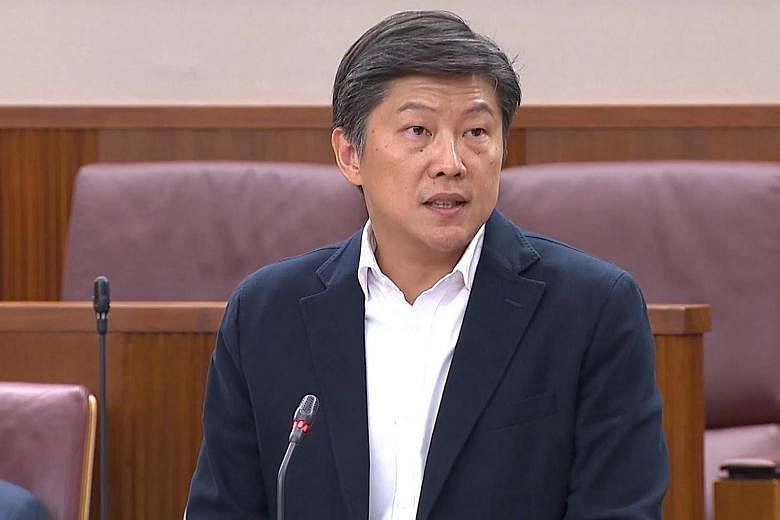Another 10,000 students will be eligible for financial help from the Government, bringing the total number to around 90,000, with the Ministry of Education (MOE) relaxing its qualifying criteria.
Minister for Education (Schools) Ng Chee Meng announced in Parliament yesterday that the gross household monthly income cap will be raised from $2,500 to $2,750, and the per capita income ceiling will go up from $625 to $690.
The bursary for junior college and pre-university students who need financial aid will go up from $750 to $900. Secondary school students under the School Meals Programme will also be given 10 meals each school week, up from the current seven, said Mr Ng.
More middle-income families will also get higher fee subsidies when the income criteria for the Independent School Bursary are revised from next month.
These initiatives will cost the Government close to $100 million a year.
Several MPs - Dr Lim Wee Kiak (Sembawang GRC), Ms Cheng Li Hui (Tampines GRC) and Mr Edwin Tong (Marine Parade GRC) - had asked about financial support for students in schools.
In response, Mr Ng said education in Singapore is heavily subsidised at all levels, and MOE is "committed to providing quality and affordable education to all Singapore citizens regardless of their financial circumstances".
Primary school pupils will also receive $230 - $30 more - in their Edusave accounts from next January, with secondary school students getting $50 more, bringing the sum to $290. "With this increase, students can participate in more activities, such as creative writing programmes and learning journeys, to broaden their learning experiences," said Mr Ng.
In response to Ms Sylvia Lim (Aljunied GRC), Senior Minister of State for Education Janil Puthucheary said MOE tracks the progress of all students, especially those from disadvantaged backgrounds, "very closely".
Ms Lim had asked how the Government measures social mobility, noting that other countries like Britain have developed a "dashboard" of social mobility indicators based on the life cycle of a person. "The objective is to make life chances more equal at the critical points for social mobility," she said. These can range from early childhood development to getting into the labour market.
Dr Janil revealed that nine in 10 students from the bottom 20 per cent of socio-economic backgrounds progress to post-secondary education. More than half of students who live in one-to three-room flats move on to publicly funded degree or diploma programmes, he said.
Amelia Teng


